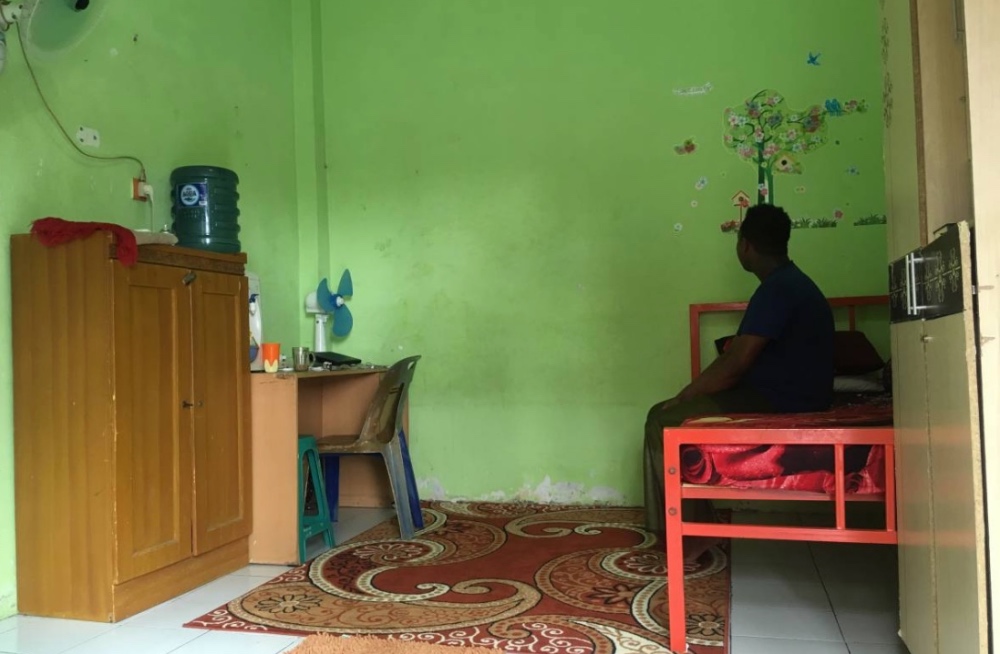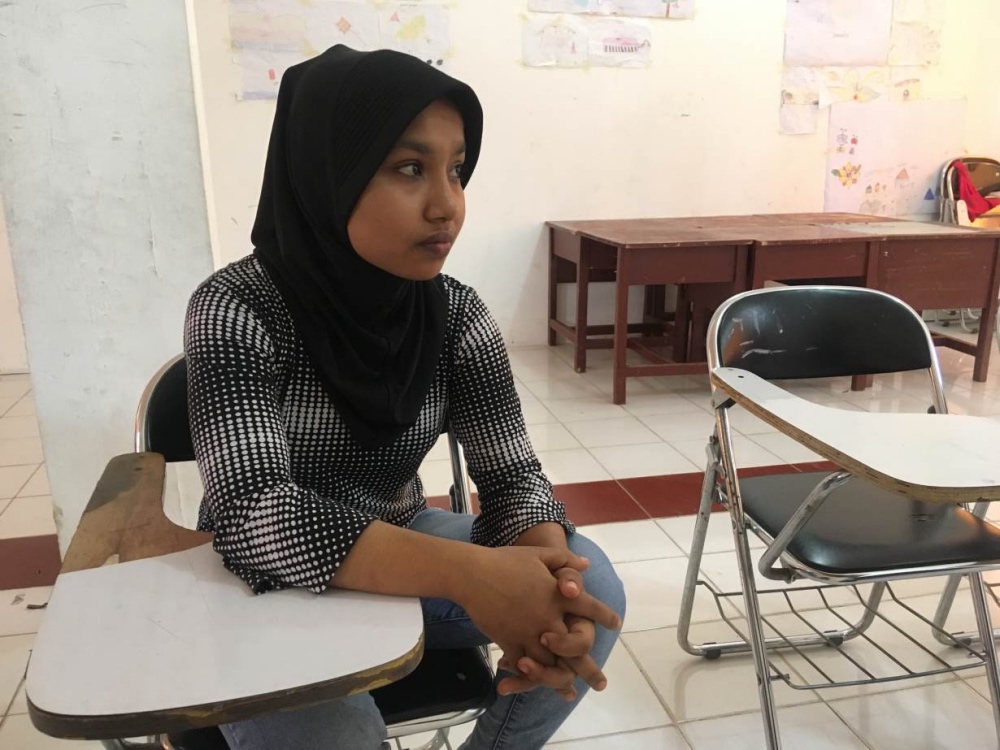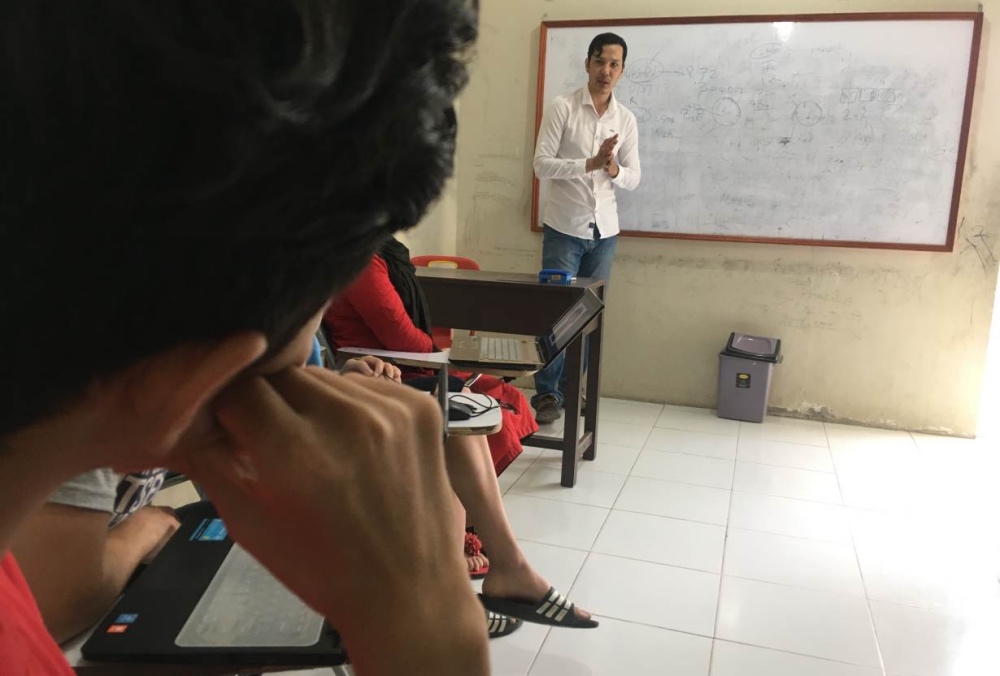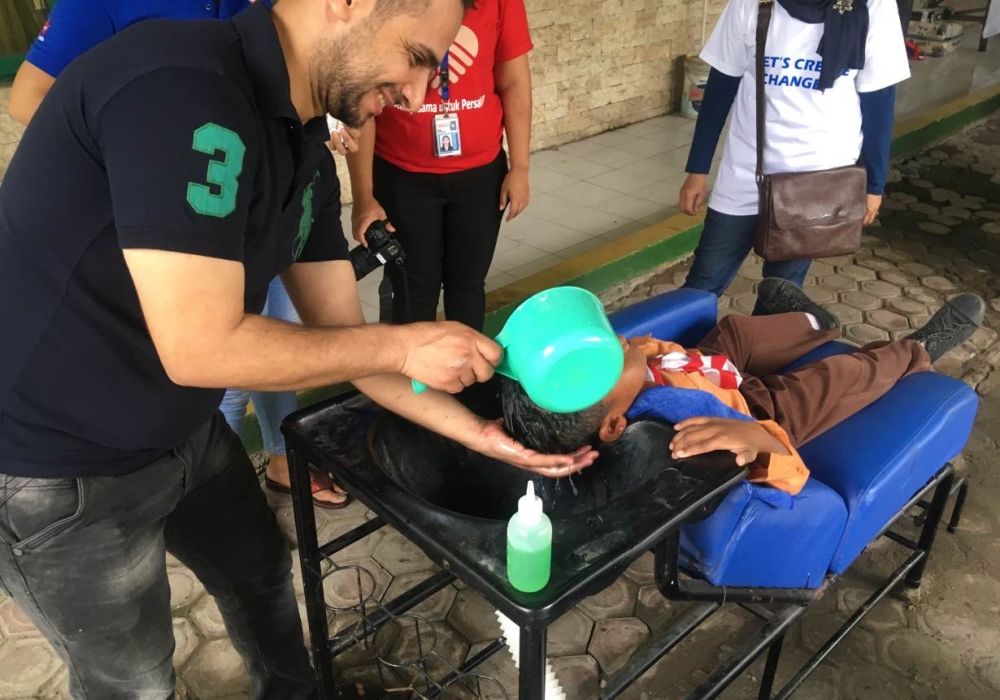
MICHAEL TAYLOR, of Thomson Reuters Foundation, reports on the plight of refugees in Indonesia…
When she was eight, Sharifa Begum was forced to flee her village in Myanmar’s Rakhine State after fighting erupted and homes were set on fire.
Separated from her parents in the panic, she escaped with her 17-year-old brother and 66 other Rohingya people on a boat, drifting at sea for a month with little food or drinking water.
Eventually rescued and towed to land by Indonesian fishermen, Begum – whose name has been changed to protect her identity – has since spent almost half her life living as a migrant in limbo.
Like almost 14,000 other refugees in Indonesia and more than 250,000 across Southeast Asia, Ms Begum, now 15, has no access to citizenship and few rights in the country where she lives – but she is unable to go home due to safety fears.
“There is no peace back in Myanmar, so I cannot return,” she told the Thomson Reuters Foundation at a refugee centre in Medan, one of Indonesia’s largest cities, on the island of Sumatra.

A refugee sits in his bedroom at a migrants’ accommodation block in Medan, Indonesia. PICTURE: Michael Taylor/Thomson Reuters Foundation
Since insurgent attacks last August sparked a military crackdown, amid reports of arson, murder and rape, nearly 700,000 more Rohingya have fled Myanmar, mostly to Bangladesh.
As many wealthier countries around the world resettle fewer refugees and impose stricter criteria to accept migrants, Ms Begum’s predicament could be shared in years to come by millions of others who flee their homes in response to pressures including climate change and persecution.
“There is no peace back in Myanmar, so I cannot return.”
– 15-year-old refugee Sharifa Begum
By the end of 2016 there were about 22.5 million refugees worldwide, according to the UN refugee agency, UNHCR, the highest number recorded since the agency was established in 1950, in the aftermath of World War II.
During 2016, 37 countries participated in UNHCR’s resettlement programme, taking in about 126,300 people, or less than 1 per cent of the world’s refugee population.
But in 2017, the number of refugees resettled fell by nearly half, to just over 65,000. It is likely to drop even further, refugee officials said, as the United States, Australia and Europe tighten restrictions.
For Ms Begum, the news is particularly bad: She has just been told by UNHCR that she – like many fellow refugees in Indonesia – is extremely unlikely to be resettled in a third country.
Several aid workers in Indonesia said some refugees had attempted suicide or killed themselves after being given that information.
Ms Begum now faces an uncertain future in Indonesia, where she has no right to settle, as the country is not a signatory to the UN refugee convention.

Sharifa Begum, 15, a Rohingya refugee, sits in a classroom at a migrants accommodation facility in Medan, Indonesia, 23rd February, 2018. PICTURE: Michael Taylor/Thomson Reuters Foundation
Mozhgan Moarefizadeh, an Iranian refugee and co-founder of the Refugees and Asylum-seekers Information Center, which runs projects around Jakarta, said those she works with often suffer mental health problems including depression and anxiety as a result of past abuses or experiences in their home countries.
“Indonesia doesn’t give any rights to refugees,” said the Iranian, who has spent five years in Indonesia. “The challenge is to survive on a day-to-day basis. But most lose hope.”
Indonesia’s government should support migrants with housing, healthcare, counselling and training, she said. Campaigns to boost awareness of the plight of refugees in Indonesia are needed both locally and overseas, she said. In Southeast Asia, only Cambodia, the Philippines and East Timor have signed the 1951 Refugee Convention, which enshrines basic human rights for migrants and displaced people.
Although Indonesia has not, it does have a long tradition of offering protection to refugees, who in the past have used it as a transit country.
But after Australia began tightening rules for asylum seekers about four years ago, many in Indonesia could hope only for a return home or official resettlement.
With these options now unlikely for many, refugees in Indonesia – largely from Afghanistan, Myanmar, Somalia and Iraq – have been left stateless and rely on aid agencies to survive.
“We have a population here that cannot work, where every day is the same,” said Mariam Khokhar, head of the International Organization for Migration office in Medan. “Families or single people stuck in time for four, five or six years.”
Many live on a small monthly handout from the IOM or from relatives to pay for food and clothing. The IOM also provides basic services, such as healthcare, accommodation and training.
Major humanitarian crises, such as the recent Rohingya flight from Myanmar to Bangladesh and Syrians escaping war to other Middle Eastern countries, often soak up a large chunk of international aid, officials said, with little funding left for those deemed to be residing in safer countries.

A refugee teacher gives a class to children at a migrants facility in Medan, Indonesia, in February. PICTURE: Michael Taylor/Thomson Reuters Foundation/
Life is monotonous for many refugees in Indonesia. Some have lived in the country for up to a decade, unable to move freely.
“We feel like we’re in an open jail. We cannot work and we cannot communicate freely,” said Rahmatallah, 35, a father of three who fled Afghanistan after death threats from the Taliban.
“My daughter, who goes to a school where the other children have beautiful clothes, asked me for coloured pencils,” he said, fighting back tears.
“We feel like we’re in an open jail. We cannot work and we cannot communicate freely.”
– Rahmatallah, 35, a father of three who fled Afghanistan after death threats from the Taliban.
“It’s a very small thing that any father should provide for his child, but I cannot,” said Rahmatallah, who did not want to reveal his full name.
While Indonesia’s refugees largely live peacefully alongside local people, often in cramped, cheap apartments, rooming houses or detention centres, there have been flashpoints of conflict.
Some Indonesians, for instance, had wrongly believed their new neighbours were getting free government handouts, stirring resentment, said Gelora Ginting, head of Tuntungan district in Medan. This was resolved when aid agencies explained the bleaker reality, he added.
Because more than half of Indonesia’s refugees are Shia Muslims from Afghanistan, while Indonesian Muslims are mainly Sunni, religious tensions are another threat.
Rising religious extremism in Indonesia could make things worse, experts warn.
“These refugees, seeing the rise of sectarianism and Sunni militancy in Indonesia, and having already witnessed this back home…don’t want to stay here,” said Andreas Harsono of Human Rights Watch in Jakarta.
Barred from seeking paid work, some refugees attend classes run by themselves or aid agencies to learn skills like English, carpentry and computer repair, hoping to prepare for the future and help out their host communities, said Mitra Salima Suryono of UNHCR Indonesia.
Refugees in Medan who have trained as hairdressers now regularly cut hair for local and street children, while furniture made by migrants is donated to an orphanage.

Ashraf Alahmad, 33, a Palestinian refugee, washes the hair of a local child during a free hair cutting event in Medan, Indonesia, in February. PICTURE: Michael Taylor/Thomson Reuters Foundation
To keep the peace, many refugees attend regular meetings with police, community leaders and immigration officials.
Indonesian officials say they have sympathy for what the migrants have been through – one reason they are willing to support them.
“If we suffered conflicts like they had, we would want to be treated in the same way that us Indonesians now treat them,” said local official Ginting.
Some efforts are underway to improve life for refugees. In late 2016, Indonesian President Joko Widodo began allowing refugee children to go to local schools.
His administration is also seeking to phase out detention centres in favour of housing migrants within the community.
Ms Suryono, of UNHCR Indonesia, said her agency had helped more than 40 refugee children enroll in local schools, and was in talks with the government about letting refugees do work that benefits local communities and provides a little income.
Indonesia’s foreign ministry did not respond to repeated requests for comment.
Occasionally, there is some good news. Muhammad Nayeem, 18, a Rohingya from Myanmar now living in Medan, received a text message a few weeks ago telling him he was one of the lucky few set to be resettled in the United States this month.
After travelling to Indonesia in 2015 on a boat crammed with 1,000 refugees – half of whom died at sea – Mr Nayeem is part of a batch of resettlement referrals that started back in 2016.
Aid agency officials, however, say that offer is unlikely to be repeated after Republican Donald Trump became US President last year and began imposing additional migration restrictions.
“Education has always been my dream,” said Mr Nayeem, who teaches English to refugee children.
“I intend to study more so that later I can help my community and inform the whole world about what is going on in my country. I want to see democracy in my country.”





